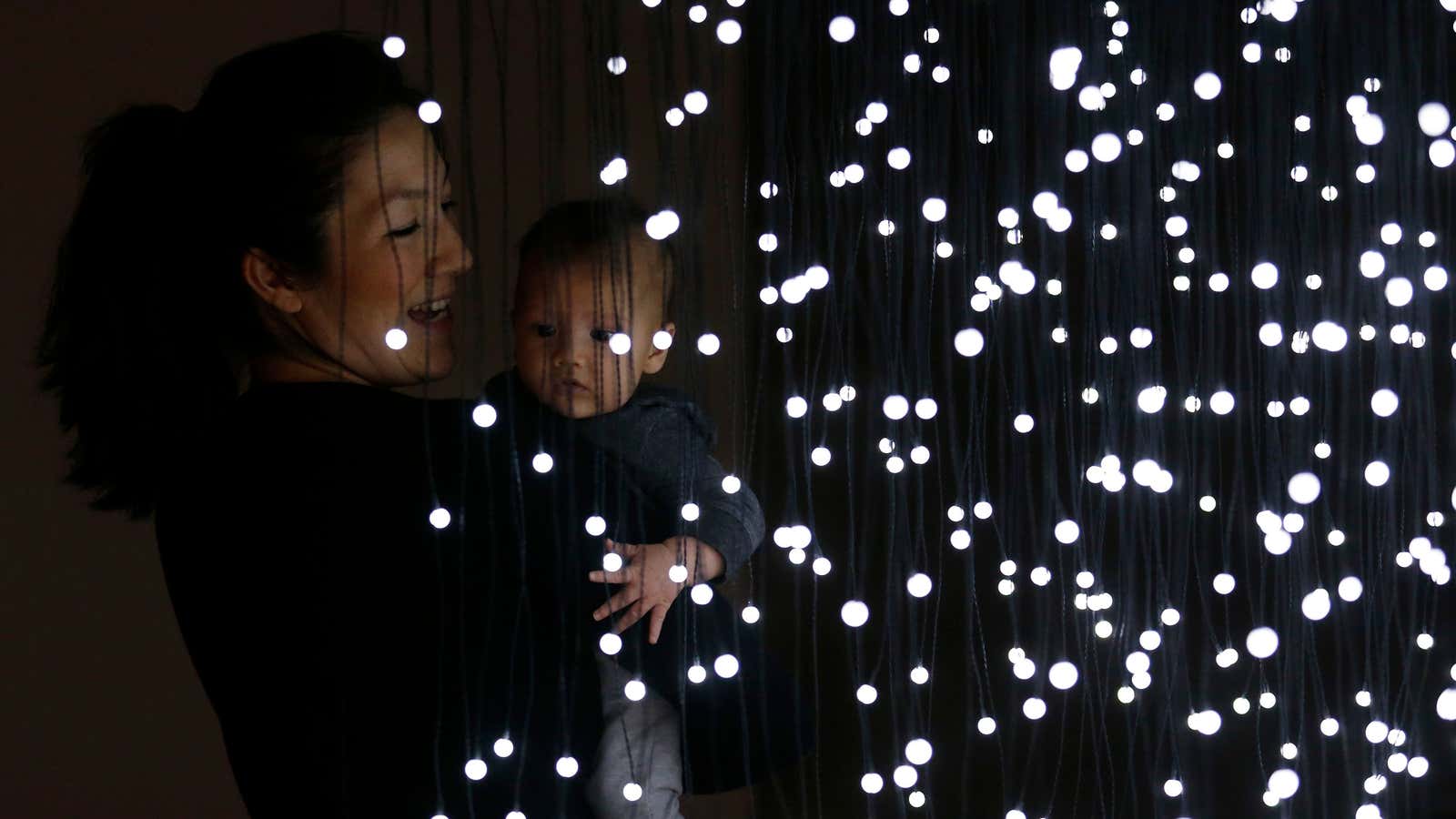More and more moms in the developed world are delaying childbirth in favor of a whole host of life experiences, and the impact this has on their children is mixed.
While only parents can make that decision for themselves, evidence suggests that the best age for childbirth—in terms of maternal health, rates of birth defects, health risks to the child, and socio-emotional outcomes—seems to fall somewhere between the mother’s mid-20s and mid-30s. There are a number of health risks associated with having a kid at age 35 or older, both for mother and child. Not only is it harder to get pregnant at later ages, older mothers are also at a higher risk for high blood pressure and diabetes during pregnancy, and complications during birth. Their children are more likely to be autistic, develop childhood cancer, and be born with Down syndrome.
But there are also very real benefits that having an older mom confers upon kids. Research shows older mothers are more patient and less punitive parents, more financially stable (paywall), and better able to balance motherhood with the demands of professional life. Meanwhile, there’s evidence their kids are better-behaved, more emotionally stable, more successful in school and likelier to attend university.
Now a large-scale study published this month in PLOS Medicine adds a new dimension to the discussion. According to the new research, children born to mothers between the ages of 36-45 were slightly more likely to exhibit problems in at least one of five developmental categories than kids born to mothers in their early 20s.
A team of researchers studied a cohort of nearly 100,000 Australian children from birth to their first year of school, in order to evaluate the developmental risks associated with their mother’s age at childbirth. The study looked at health and demographic data drawn from hospital records, birth registration datasets, and public school enrollment numbers for New South Wales.
It also drew data from the Australian Early Development Census, which includes teachers’ assessments of children’s physical health, social skills, emotional maturity, language and cognitive skills, communication skills, and general knowledge. The researchers classified a child as “vulnerable” or “at risk” in one of these developmental categories when he or she fell below a certain percentile of the 2009 Census scores, and then measured how many kids in each maternal age group were at risk in one or more of the categories.
They found that 17%-24% of kids with moms aged 36-45 are vulnerable in one or more developmental risk categories compared to 17%-18% of kids born to moms between 30-35 years old. (The numbers are given as a range because the researchers applied a few different models to figure them out.) The researchers don’t have the data to understand the slight difference, says Kathleen Falster, the lead scientist on the study and a senior research fellow at the University of New South Wales-Sydney and Australian National University. But in any case, that slight increased risk is relatively small. In other words, older moms shouldn’t panic.
In fact, children with the highest developmental risk were those born to mothers under 15 years of age: 40% of these children showed problems in at least one developmental category. In these cases, socioeconomic disadvantage explained about half of the increased risk of developmental vulnerability.
The decision about when to have a baby is entirely a woman’s choice, of course. But Falster’s team identified two implications of their study. One is that developmental risks associated with teen pregnancies call for more “policies and programs that support disadvantaged mothers and children.” Another is that, in countries that already triage kids into early intervention programs based partly on having a teenage mom, public policy should also consider focusing on some form of early intervention for the kids of slightly older-than-average mothers.
To some extent, what the researchers are saying is that there’s no perfect age to have a child. While a mother’s age does matter, what’s more important is that any child gets the education and healthcare they need to thrive.
